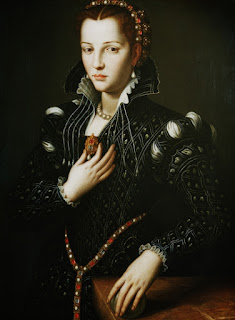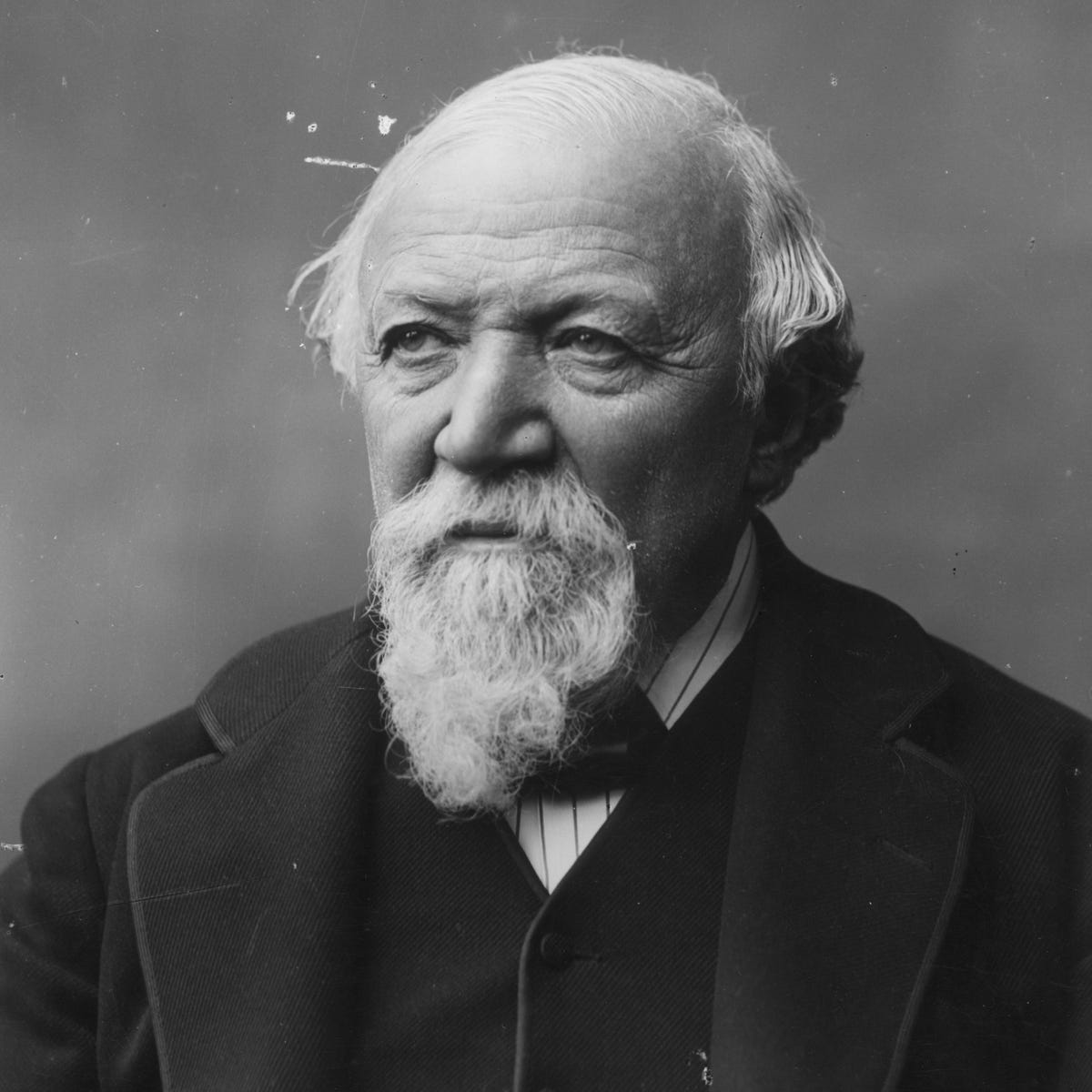Historical Male Supremacy in Robert Browning's "My Last Duchess"
Robert Browning's "My Last Duchess" is a fascinating example of how Italian Renaissance-era men traditionally conformed to the pigeonhole of dominant, hyper-masculine personalities. In doing so, this often cast a shadow over the significance of women and furthered the gendered divide of society. This blog article explores this divide, breathes life into the duchess and defines her as more than just an artistic work, and identifies the relationship between vital historical context and the message eminent in Browning's work.
 |
| Portrait of Lucrezia de' Medici (1) |
Duchess of Ferrara- who was she?
According to Wikipedia, Lucrezia de' Medici was born in Florence in the 14th century, and was the third daughter of Cosimo I de' Medici. Following under the strict Spanish court ceremonial, Lucrezia was introduced to Alfonso II d'Este in 1557, and contracted to marry him and become the Duchess of Ferrara. At the time that the two were married, Alfonso was 24 years old and Lucrezia just 13. The newly-crowned Duke of Ferrara (Alfonso) left shortly after the beginning of their marriage to handle business in Paris, leaving Lucrezia alone in Florence. During this time, she struggled to eat or spend any time outside of her bedroom and grew frail and sickly. Her letters to the duke often went unanswered and she found herself praying for his return for long periods of time. Eventually, she moved to Ferrara with him in February of 1560. Already frail, she suffered the devastating effects of tuberculosis and passed away less than a year later in 1561 (1).
Following her death, it was rumored that her husband had ordered her death by means of poisoning, although there is no concrete evidence to back this theory (1). Lucrezia's story is commonly accepted as the inspiration for Browning's poem, but how does her lack of representation in the work reflect the gendered divide of her time?
Gender Roles During the Italian Renaissance
 |
| The Benois Madonna (4) |
While a clear divide between genders still exists in today's world, it is no secret that historically, women faced an equality-based challenge with their male counterparts. In the words of a 1992 thesis from the University of Richmond, "[w]omen were seen and believed by their male counter parts to be the weaker sex- both mentally and physically- and therefore submissive to the more dominant male" (3). In terms of "My Last Duchess", the duchess was seen as nothing more than a portrait on the wall after her death. She was perceived as unfaithful, "[t]oo easily impressed" (2), and painted with blush on her cheeks as if to mock her attraction toward other men. These harmful stereotypes were perpetuated not just in assumed infidelity, but in the way women were seen as nothing more than child bearers and caretakers.
Gender in Renaissance Art
The Italian Renaissance-era painting of the Benois Madonna pictured to the left illustrates this role with the image of a woman and her deep connection and devotion to her child (4). Not to say that motherly connection isn't a beautiful thing, but it paints a specific stereotype of a woman's role in society.
Lucrezia's Portrayal
In Browning's work, the duchess was expected to be submissive and follow the expectations of her husband, the duke. When she "did not", she was seen as nothing more than a symbol of adultery. The University of Richmond thesis furthers the gender stereotype by stating, "[f]urthermore, a woman had to be virtuous, and chaste, physically desiring only her husband. She should care about her appearance and desire to be attractive to her husband" (3). Women were decorative objects used to maintain the household and raise the children. They were not to be progressive, share their own thoughts or ideas, or hold any power amongst men. The same reigns true in Lucrezia's case, as she was abandoned by her husband while he was making business transactions and didn't even receive a response to her letters that longed for his return.
Browning's Vision
Robert Browning (1812-1889)

Lucrezia's questionable death drove the main theme of Robert Browning's "My Last Duchess". In the 28-line poem, Browning describes the unnamed duke's (presumed to be Alfonso II d'Este) interaction with a count while "admiring" the portrait of his most recent duchess who has passed away. All the while, they are discussing future marriage prospects so the duke can carry out his familial legacy. Readers grow to question the reality of the duchess's death when the duke states "[t]his grew; I gave commands; then all smiles stopped together" (2). It is assumed that the duke experienced jealousy over his wife's interactions with others regardless of whether or not these interactions were considered flirtatious. This idea of control of women by men is only exemplified through the attitude of the duke in the poem, who placed a curtain around the portrait of his duchess to open and close as he pleases. Even through her death, he still has power over her.
This idea exemplifies male domination in this era of Italy, and how the plague of sexism was no stranger to the duke. Browning was deliberate in his delivery of gender norms in his work, and by stripping away the identity of the duchess, made specific commentary on the societal role in which she was placed. The duke believed himself to be a symbol of power based upon his 900-year old name and couldn't fathom as to why his wife would compare his gift to others when his was so valuable. He couldn't fathom the idea that his wife solely loved him, and he couldn't believe that she was more than a painting on a wall. After all, he's a man, and she's just a woman, right?
Below you can find links to the full version of Browning's poem, and a short video outlining gender norms in Medieval Europe, which carried into the Italian Renaissance.
Sources
(1) “Lucrezia De' Medici, Duchess of Ferrara.” Wikipedia, Wikimedia Foundation, 26 Mar. 2023, https://en.wikipedia.org/wiki/Lucrezia_de%27_Medici,_Duchess_of_Ferrara.
(2) Browning, Robert. “My Last Duchess by Robert Browning.” Poetry Foundation, Poetry Foundation, https://www.poetryfoundation.org/poems/43768/my-last-duchess.
(3) University of Richmond UR Scholarship Repository. https://scholarship.richmond.edu/cgi/viewcontent.cgi?article=2467&context=honors-theses.
(4) sitiaisyah12. “The World of Renaissance Women: Representation, Agency and Identity.” Italian Culture, 17 Dec. 2021, https://nuitalian.org/2021/12/17/the-world-of-renaissance-women-representation-agency-and-identity/.


Comments
Post a Comment